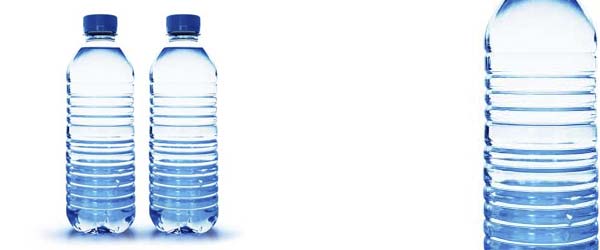
Currently, Phthalates are almost everywhere.
What are Phthalates?
Phthalates are a group of chemical compounds used in the production of plastics such as PVC to make them softer and more flexible. Phthalates were first introduced in the 1920s and are used in a wide variety of products from building materials, personal-care products, medical devices to pharmaceuticals, food products, and textiles. Essentially they are contained in a multitude of everyday plastic products.
When present in these products, phthalates can be released because they are not chemically bound to the plastics. This may lead to human exposure the net effects of this exposure remain somewhat vague.
Where are Phthalates?
In 2003, researchers at the US Center for Disease Control (CDC) documented:
People are exposed to phthalates by eating and drinking foods that have been in contact with containers and products containing phthalates. To a lesser extent exposure can occur from breathing in air that contains phthalate vapors or dust contaminated with phthalate particles.
The Guardian points out that phthalates are next to impossible to avoid. They are in multiple household items, personal care products, fragrance, household cleaners, and food. The article notes that:
In food, for example, even milk packaged in glass may have passed through plastic tubes on its way from the cow to the bottle, taking DEHP along with it. “Milking machines use a lot of plastic and DEHP is free and very lipophilic (fat soluble), and milk is full of lipids, so it just pulls the DEHP out of the plastic tubing and into the milk,” explains Robin Whyatt, professor of environmental health sciences at the Columbia University Medical Center and the lead author on several landmark phthalate studies (Westervelt, 2015).
Various other pieces of research and articles point out that phthalates are endocrine disruptors. The American Chemical Council note that disruptors ‘substances mimic a natural hormone, fooling the body into over-responding to the stimulus (e.g., a growth hormone that results in increased muscle mass), or responding at inappropriate times (e.g., producing insulin when it is not needed)’.
Similar to phthalates, BPA which stands for bisphenol A is an industrial chemical that has been used to make certain plastics and resins since the 1960s. According to the Mayo Clinic,
BPA is found in polycarbonate plastics and epoxy resins. Polycarbonate plastics are often used in containers that store food and beverages, such as water bottles. Epoxy resins are used to coat the inside of metal products, such as food cans, bottle tops and water supply lines.
Currently, there appears to be a re-assessment as to how we manufacture and utilise plastic. The US decision on BPA may well have a knock-on effect to Phthalates in the EU. In 2012 Time magazine asked the question ‘When the evidence is scary but uncertain, what will the federal government do?’. According to the same article,
On March 30 (2012), the FDA announced that it was rejecting a petition from the Natural Resources Defense Council (NRDC) to ban BPA from food packaging. “While evidence from some studies have raised questions as to whether BPA may be associated with a variety of health effects, there remain serious questions about these studies, particularly as they relate to humans,” the FDA wrote in a statement following its ruling.
However, in 2013 a California court went against these findings, and introduced a ruling specific to the state of Califormia.
The California Office of Environmental Health Hazard Assessment (OEHHA) announced that it intended to add BPA to California’s Proposition 65 list of harmful chemicals and require companies to warn consumers when their products can expose them to BPA.
Are Phthalates dangerous?
Recent EU studies conclude that more research into the use of Phthalates is required. In 2010 Reuters compiled a ‘Special Report: The problem with phthalates’ and noted that Professor Richard Sharpe, an expert in male reproductive health at Edinburgh University, believes that “understanding whether or not phthalates play any role in human male reproductive disorders is pivotal.” Animal studies, he says “point clearly toward effects, but human studies are very mixed.”
What is the future of Phthalates?
Allan (2014) highlighted that the Danish Environment Minister wanted to ban all Phthalates from December 2015 but a previous decision of the European Court from 2013 obscured this and demanded them to wait for the normal procedures and decisions of the European Chemicals Agency (ECHA), that is currently assessing, whether there is basis for an EU-wide ban.
Similar to what happened in the US, where California decided to interpret the results in relation to BPA and list it as a harmful chemical, individual states in the EU could take a similar approach with Phthalates and require companies to warn consumers when and where they are present.
References:
Scientific Committee on Health and Environmental Risks of the European Commission (2008) ‘Phthalates in school supplies’.Available at: http://ec.europa.eu/health/opinions/en/phthalates-school-supplies/about-phthalates-school-supplies.htm [Accessed 24 March 2015]
Phthalate (2015). Available at: https://en.wikipedia.org/wiki/Phthalate [Accessed 23 March 2015].
Centers for Disease Control and Prevention (2003) Phthalates FactSheet. Available at: http://www.cdc.gov/biomonitoring/pdf/Pthalates_FactSheet.pdf [Accessed 23 March 2015]
Endocrine Studies (2015). Available at: http://phthalates.americanchemistry.com/Research-Phthalates/Endocrine-Studies [Accessed 1 April 2015].
Phthalates (2014) Available at: http://www.fda.gov/Cosmetics/ProductsIngredients/Ingredients/ucm128250.htm [Accessed 24 March 2015]
Phthalates (2015) Available at: http://www.cpsc.gov/en/Business–Manufacturing/Business-Education/Business-Guidance/Phthalates-Information/ [Accessed 24 March 2015]
Walsh, B. (2012) Why the FDA Hasn’t Banned Potentially Toxic BPA (Yet). Available at: http://content.time.com/time/health/article/0,8599,2110902,00.html [Accessed 1 April 2015].
Westervelt, A. (2015) Phthalates are everywhere, and the health risks are worrying. How bad are they really? Available at: http://www.theguardian.com/lifeandstyle/2015/feb/10/phthalates-plastics-chemicals-research-analysis [Accessed 23 March 2015]
Harrison, P. (2010) ‘Special Report: The problem with phthalates’. Available at: http://www.reuters.com/article/2010/10/18/us-plastics-health-idUSTRE69H1PM20101018 [Accessed 24 March 2015]
Chemical & Engineering News (2005) ‘EU Bans Three Phthalates From Toys, Restricts Three More ‘, Volume 83, Number 28 pp. 11
Allan. (2014) ‘EU OVERRULES A DANISH NATIONAL BAN OF FOUR PHTHALATES’. Available at: http://nipsect.dk/eu-overrules-a-danish-national-ban-of-four-phthalates/ [Accessed 24 March 2015]
